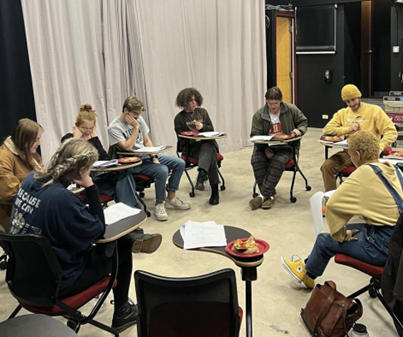If the name John Green sounds familiar to you, congratulations. It should. He is the acclaimed author of the award-winning novel “The Fault in Our Stars,” which was adapted into a movie this past summer. However, “The Fault in Our Stars” is only one of Green’s multiple novels. In 2005, Green published, and won an award for, his very first novel, called “Looking For Alaska.” This story delves into the heart and mind of young adults facing questions of what it means to live and be human.
Miles Halter is a mostly-typical teenage guy attending public school in Florida. He’s smart, hates sports and enjoys reading the biographies of historical and famous figures, paying special attention to their final words before their death.
Due to a lack of friends and a desire to find something that makes life worth living, he decides to follow in his father’s footsteps and attend Culver Creek Boarding School in Alabama. His roommate is Chip Martin, a.k.a., the ‘Colonel’. The Colonel is a short and stocky guy whose knack for memorization is made apparent when he begins listing countries of the world in alphabetic order. Miles is quickly renamed ‘Pudge’ in deliberate opposition to his blatantly skinny frame. Pudge is then quickly thrown head over heels into the crazy world that is Culver Creek.
The Colonel introduces Pudge to a girl named Alaska. She is moody, gorgeous, defiant, philosophical, nearly impossible to understand, unpredictable and considered to be the Queen of Pranks. Pudge is immediately intrigued and very possibly in love, despite the fact that she has a boyfriend.
Life as the friend of Alaska and Colonel is one of trying not to get caught while sneaking out to the woods, smoking in the bathrooms and drinking alcohol when all else fails.
They seem to spend so much time absorbed in these activities that we sometimes forget the fact that they attend a highly academic school. Thankfully, we are reminded of their serious natures and smarts by the casually-inserted references to authors, recitations of geography and discussions of math.
The novel is split into two sections, dubbed ‘Before’ and ‘After’. The ‘Before’ section is split into chapter-like sections, beginning with ‘one hundred thirty-six days before’ and counting down until ‘the day of.’ Some days are detailed and eventful, while others are skipped completely. Throughout the days, all we can do is wonder what is going to happen as the marker that decides what is considered ‘Before’ and ‘After.’ We find it hard to stop turning pages, because each time we do, we are one day closer to the defining moment we desperately wish to understand.
Green tells this story from the singular perspective of Pudge, but we never get bored because of Pudge’s constantly busy mind and dependable wit.
We experience the beauty of being reckless, being in love, and being a young mind trying to figure out the world in front of us. Still, we learn that looking to the future isn’t always the answer when there are pieces of the past with the ability to frame everything we see.
Pudge’s journey is one we can easily feel connected to, no matter how long ago it was that we existed in the confusion of being a teenager. The emotions and mysteries are timeless, touching on themes that will not ever be fully resolved.
Green’s first novel fully displays his mastery of presenting unanswerable questions in a fashion we can relate to without being overwhelmed or turned away.











